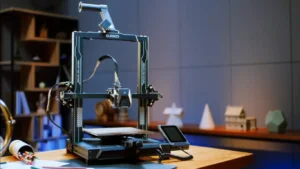Having worked as 3D printing enthusiast for so many different printers over the years. When Prusa announced the MK4, I was eager to get my hands on it as they are following up from their highly praised MK3S+. Having spent countless hours testing, I can now fully review this highly anticipated machine. I am going in depth with the Prusa mk4 in this article so have a seat.
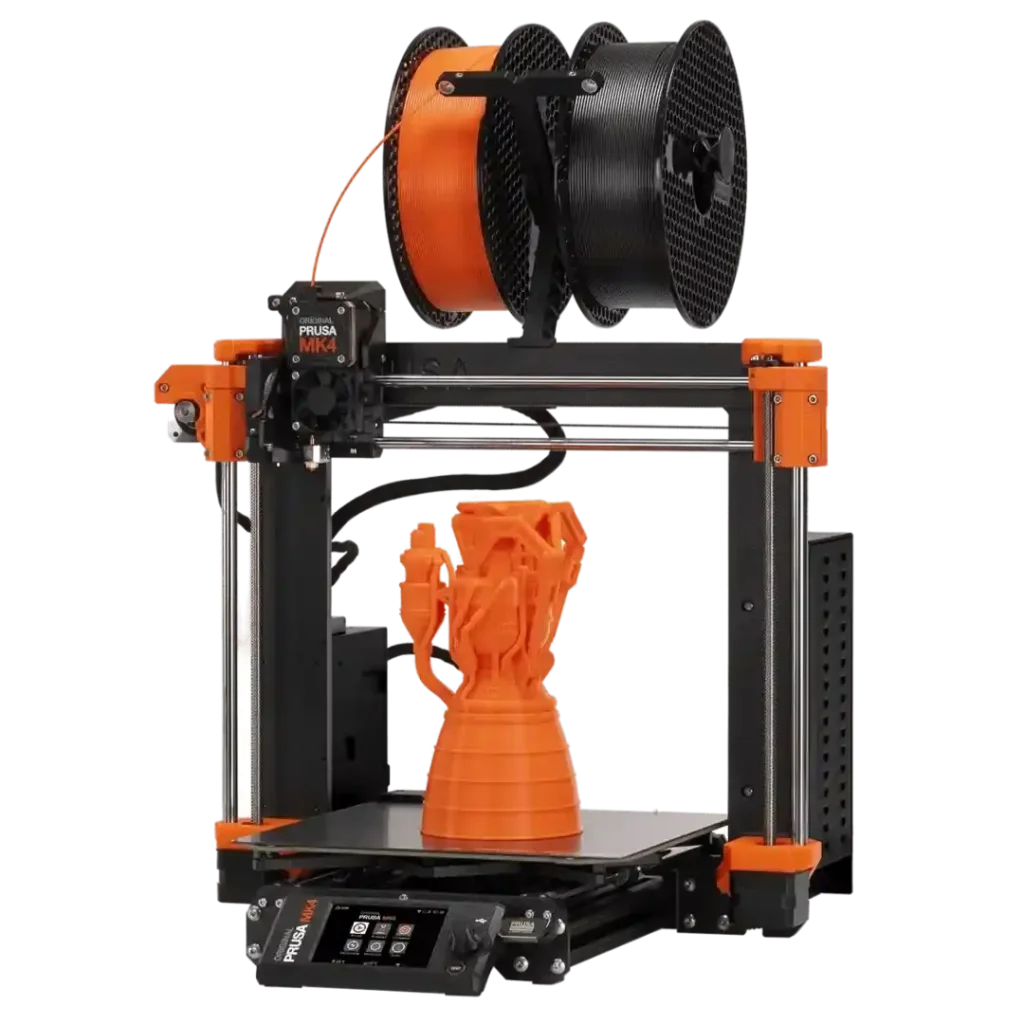
Quick Overview
- Quick Setup: Fast, easy assembly.
- Large Build Volume: 250 x 210 x 220 mm
- High-Speed Prints: Double print speed.
- Top Quality: Precise, reliable results.
- Auto Calibration: Perfect first layer.
- Silent Operation: Smooth, quiet printing.
- Versatile Filaments: Handles all materials.
- Wi-Fi Enabled: Remote control access.
- Multi-Material: Print with 5 materials.
- Upgradeable: Continuous improvements.
Unboxing and First Impressions
I just received my Prusa from the delivery guy and i really couldn’t wait to open it. The unboxing was a joy, as Prusa always delivers a great experience. The printer came fully assembled (I opted for the pre-built version), nestled securely in foam padding.
Here’s what you’ll find in the box:
- The Prusa MK4 3D printer (obviously)
- A full spool of Prusa’s own PLA filament
- Spool holder and filament guide
- Various tools (wrench, pliers, Allen keys, screwdriver)
- Nozzle cleaning needle and Prusa-branded lubricant
- USB flash drive loaded with model files
- 3D printing handbook and web links for guides
- A bag of gummy bears (mine was already opened – thanks, Prusa team!)
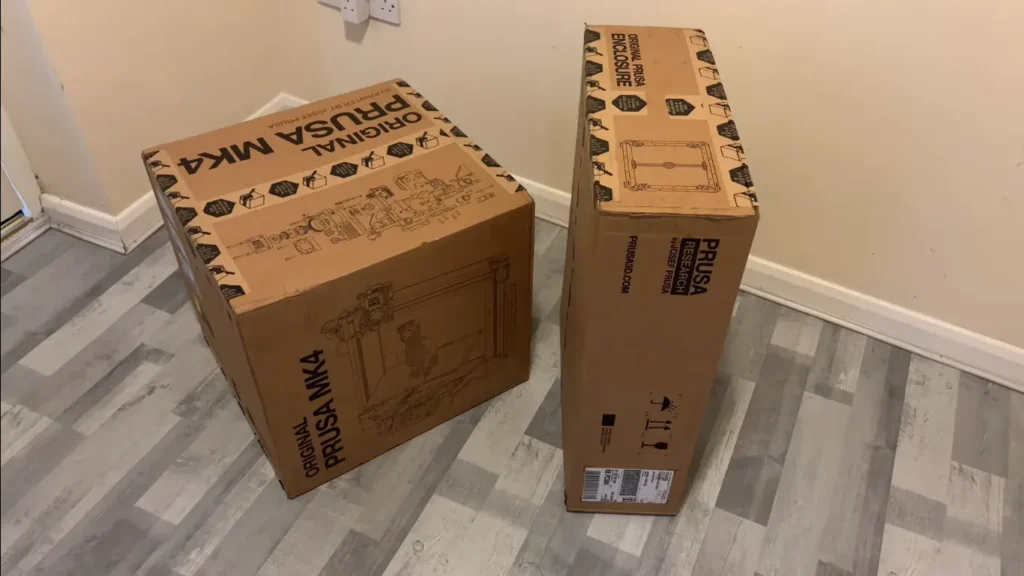
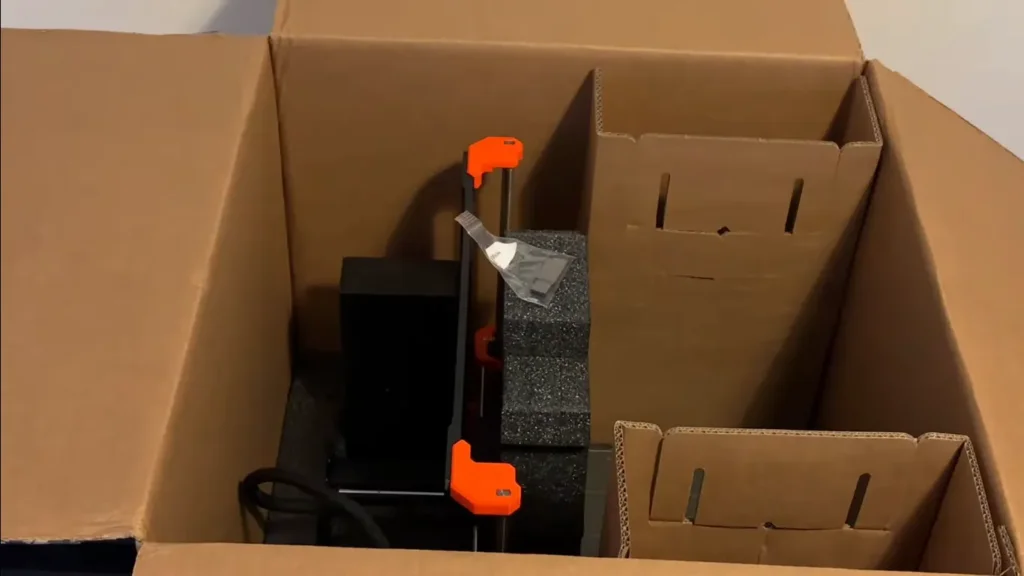
One thing that immediately caught my eye was a test print attached to the bed, along with a quality control card. It’s a nice touch that instills confidence right out of the gate.
Setup and Calibration
Setting up the Prusa MK4 was a breeze compared to some other printers I’ve used. After installing the filament guide add-on and removing the test print, I plugged it in and let it do its thing. The printer runs through a self-test process, checking for any assembly issues.
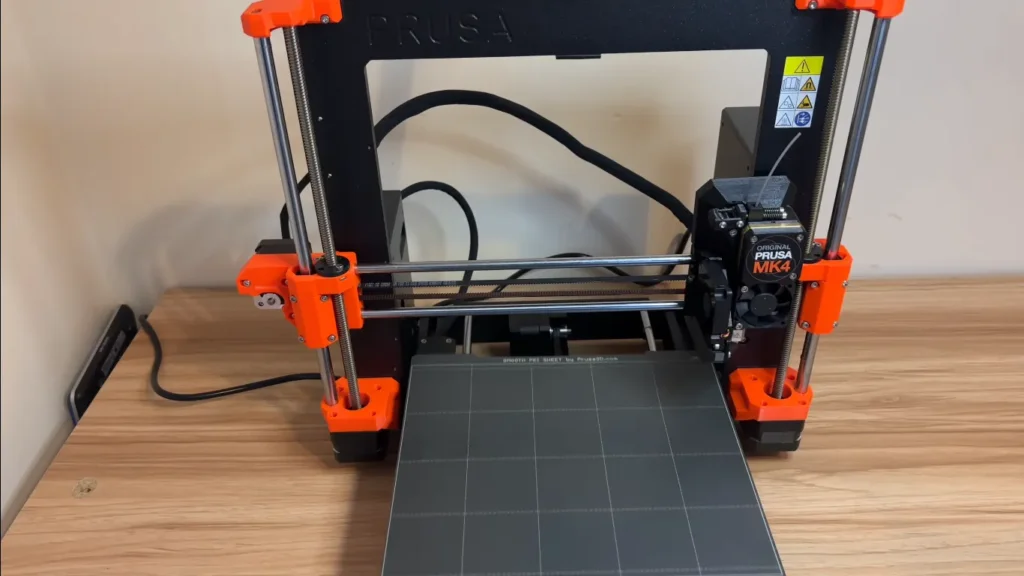
The auto-calibration routine is a sight to behold. The printer performs a “nozzle tap” dance across the bed, precisely measuring distances to ensure a perfect first layer. It’s almost hypnotic to watch.
One minor hiccup I encountered was during the initial setup – there was an issue with the I2C bus communication. A quick restart solved the problem, and I haven’t seen it since. It’s worth noting that early production units might have some quirks, but Prusa’s support team is top-notch if you run into any issues.
Pros ✅
+ Exceptional print quality out of the box
+ Reliable and consistent performance
+ Excellent auto-bed leveling system
+ Quick-swap nozzle system
+ Wide material compatibility
+ Prusa’s renowned customer support
+ Active development and firmware improvements
Cons 📛
– Higher price point compared to some competitors
– Limited build volume (250x210x220mm)
– Non-touch screen interface feels dated
– Wi-Fi setup and transfer speeds could be improved
– Some early production units had minor issues (mostly resolved now)
– Not as fast as some CoreXY printers
The Nextruder: A Game-Changer
The Prusa MK4’s standout feature is its innovative extruder system, the “Nextruder.” This isn’t just a clever marketing term; it represents a substantial upgrade compared to earlier models. The Nextruder features a breakout board that simplifies cable management and makes part replacement a breeze.
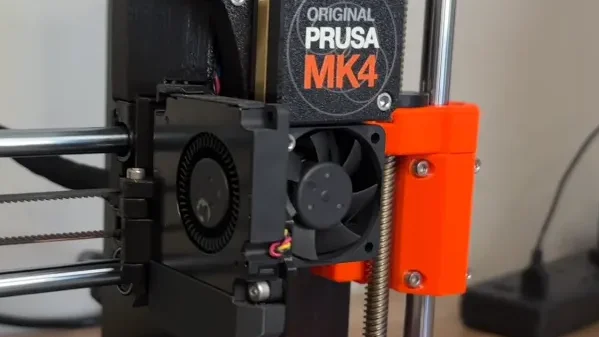
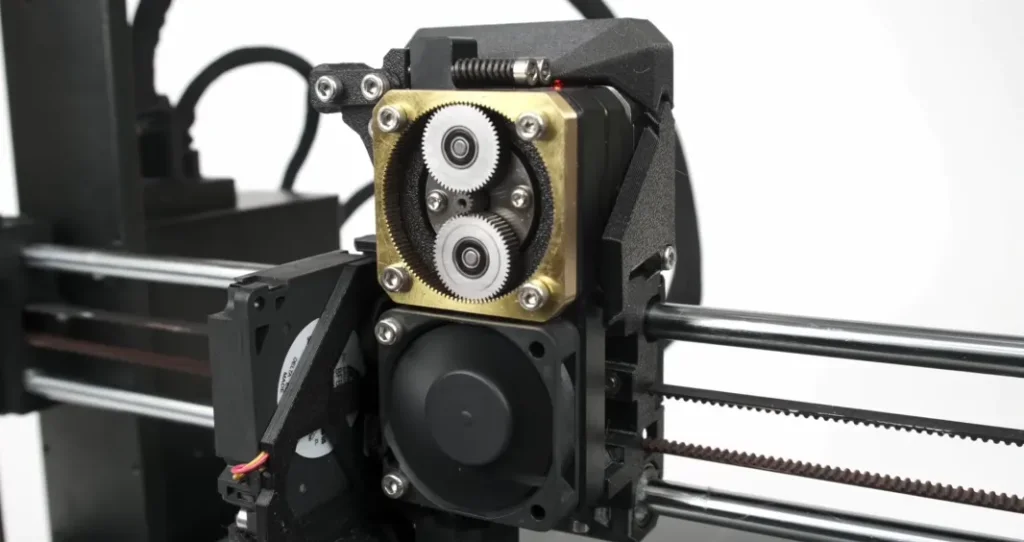
But the real star of the show is the quick-swap nozzle system. With just two thumb screws, you can swap out nozzles in seconds. The nozzles themselves are all-metal, which means you can print with a wide range of materials without worrying about heat creep or clogs.
Print Quality: Where the Rubber Meets the Road
Let’s talk about what really matters: print quality. I’ve tested the Prusa MK4 with a variety of prints, from intricate miniatures to practical components, and I’m thoroughly impressed.
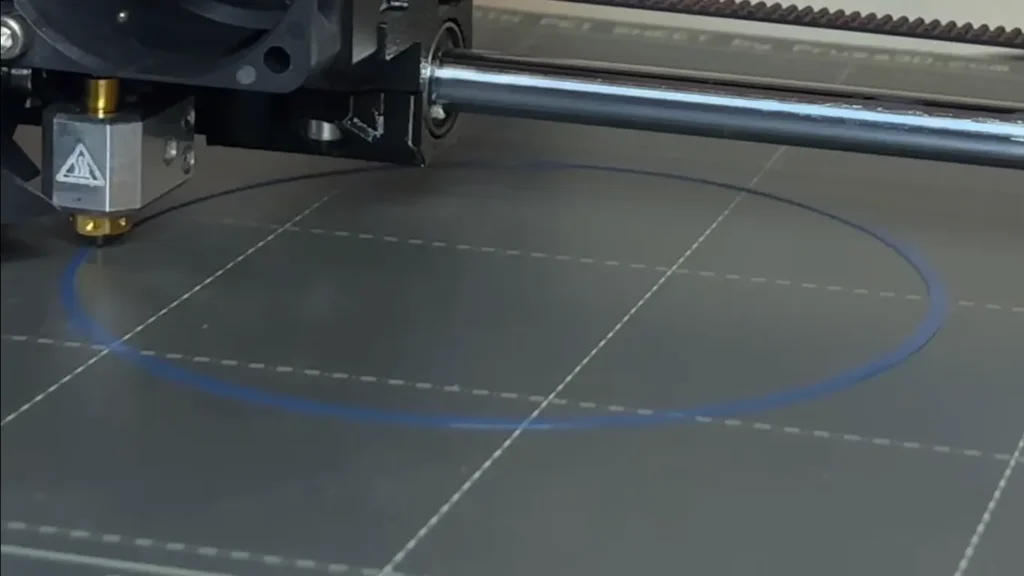
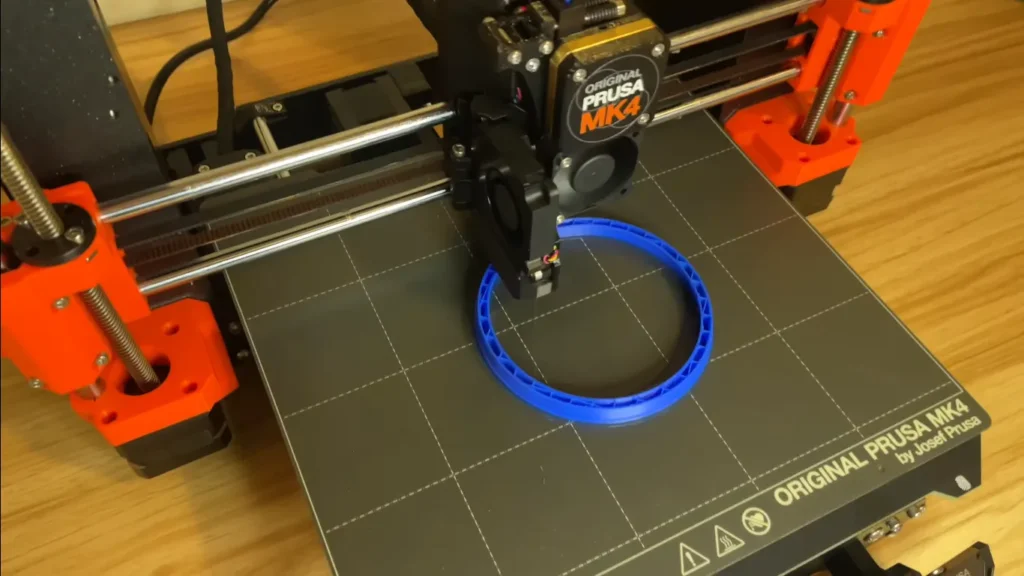
The first layer adhesion is consistently perfect thanks to the new load cell sensor. Gone are the days of fiddling with Z-offset adjustments – the MK4 nails it every time.
I started with the classic Benchy test, printing at various speeds:
- Standard 1-hour print: Flawless. Clean surfaces, sharp details.
- Speed-optimized 27-minute print: Still impressive. Some very minor artifacts, but nothing you’d notice without a magnifying glass.
- Ludicrous 12-minute print: Surprisingly decent! Yes, it’s lighter and almost hollow, but the surface quality is still respectable.
Moving on to more complex prints, I tackled a detailed Cyber Llama model. The results were stunning – crisp details, smooth curves, and virtually no visible layer lines. The Prusa MK4 handled overhangs and bridging like a champ.
For functional parts, I printed a multi-drawer storage tower. The fit and finish were spot-on, with drawers sliding smoothly and tolerances maintained throughout.
Speed Demons and Material Mastery
Prusa has made bold claims about the MK4’s speed capabilities, and I was eager to put them to the test. While it’s not quite as fast as some CoreXY machines like the Bamboo Lab X1, it’s a significant step up from the MK3S+.
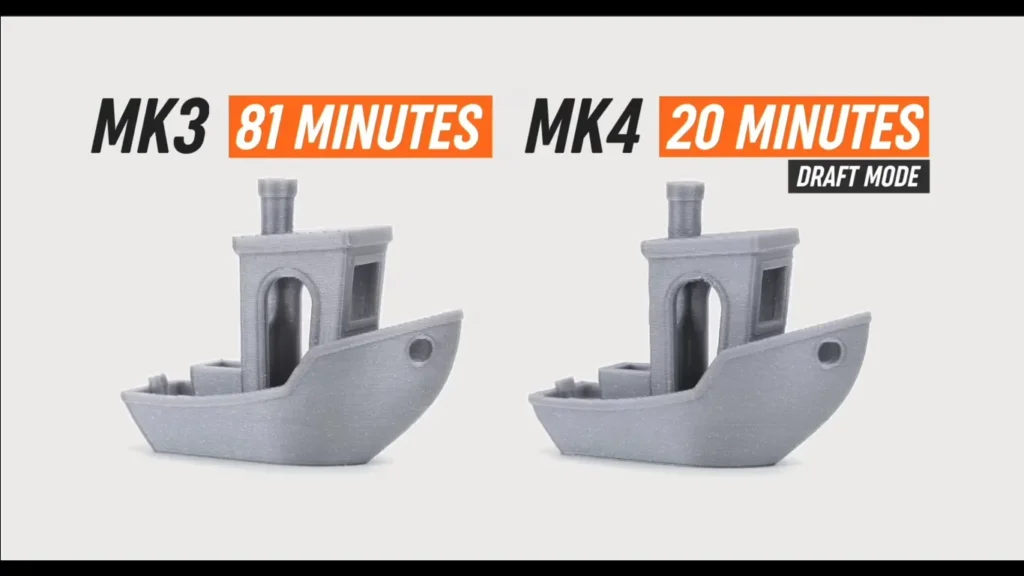
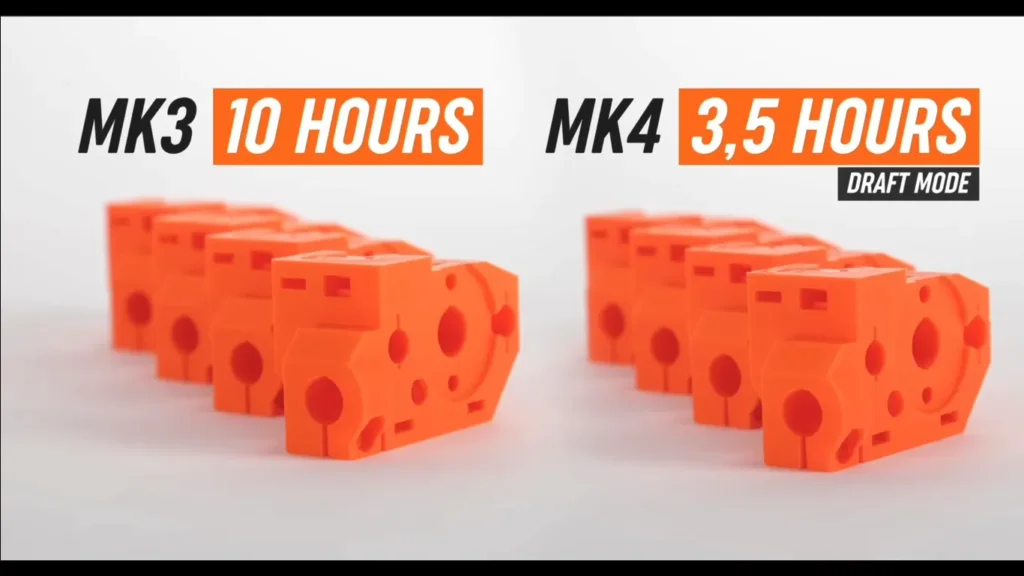
I pushed the printer to its limits, cranking up the speed to 200mm/s. At these speeds, you start to see some issues like minor layer shifts, but a recent firmware update has largely mitigated these problems. It’s impressive to see Prusa actively improving the printer’s performance post-release.
The Prusa MK4 isn’t just about PLA, though. I’ve successfully printed with PETG, ABS, TPU, and even polycarbonate. Each material required some tweaking, but the printer handled them all admirably. The only hiccup was with ABS – I’d recommend an enclosure for best results with that particular filament.
Software and Connectivity
Prusa Slicer remains one of the best slicing software options out there, and it’s pre-loaded with profiles for the Prusa MK4. While you can begin printing optimally out of the box, tinkerers will have ample opportunity to tailor the settings to their liking.
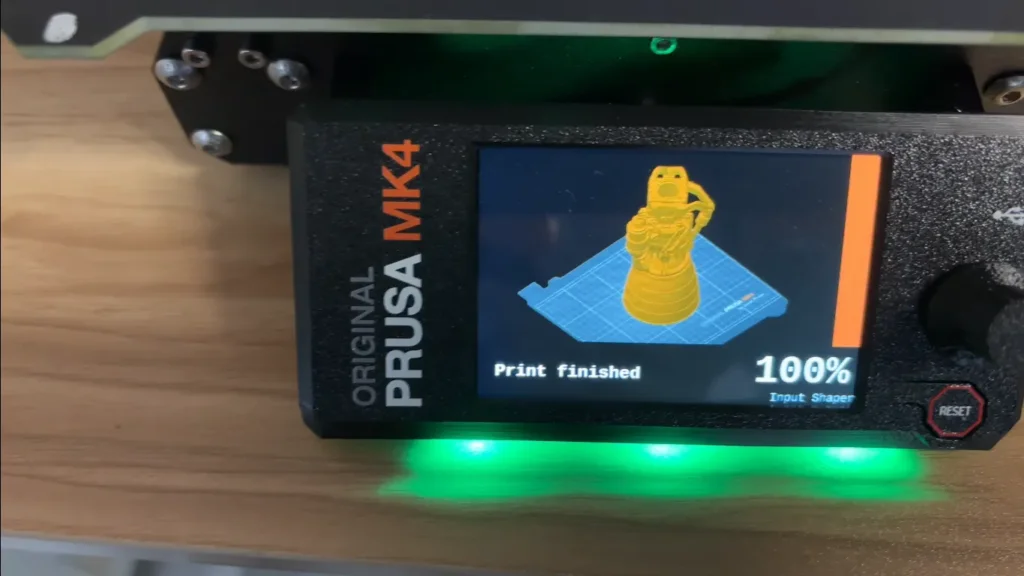
That printer is equipped with Wi-Fi and Ethernet out of the box. Wi-Fi is a bit of a clunky set-up, you have to generate in file an USB drive and upload this into the printer. It’s a little less seamless than on some other printers, but once it is connected and running we encountered no issues. Transferring files is a bit slow, so for larger original prints I still prefer using the USB drive.
One disappointment is the lack of a touch screen. The color display is nice, but for 2024, I anticipated a more contemporary interface. It’s not a major issue, but it seems like a missed chance.
User Experience: Thoughtful Improvements
Prusa has clearly put a lot of thought into improving the user experience with the MK4. Some standout features include:
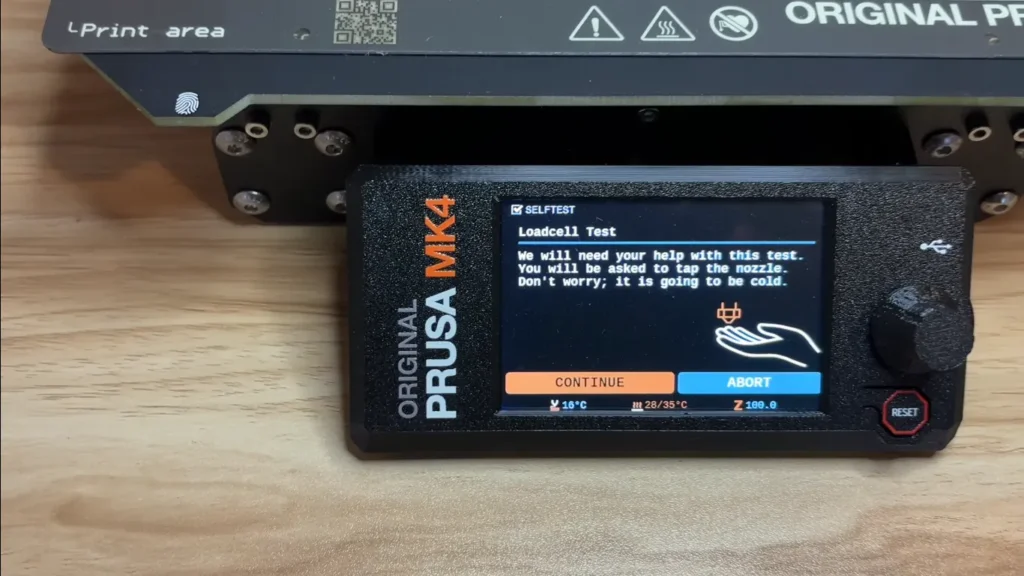
- Loadcell Sensor: This new bed leveling system is a game-changer. It consistently produced perfect first layers without any manual adjustment.
- Color Screen: While not touch-sensitive (a missed opportunity, in my opinion), it’s a welcome upgrade from the monochrome display of previous models.
- Wi-Fi Connectivity: The addition of Wi-Fi and ethernet opens up new possibilities for remote printing and monitoring. However, the implementation feels a bit clunky, with slow file transfer speeds.
- Prusa Connect: This cloud-based system allows for remote print management, which is great for those who run multiple printers or need to monitor long prints.
Prusa MK4 Specs Chart
| Feature | Specification |
|---|---|
| Build Volume | 250 x 210 x 220 mm (not exactly huge, but decent) |
| Layer Height | 0.05 – 0.35 mm (from ‘Is this even printed?’ to ‘Yeah, I can see the layers’) |
| Nozzle Diameter | 0.4 mm (swappable, if you’re feeling adventurous) |
| Filament Diameter | 1.75 mm (standard stuff, folks) |
| Max Nozzle Temp | 290°C (hot enough for most plastics you’ll throw at it) |
| Max Bed Temp | 120°C (toasty!) |
| Connectivity | USB, Ethernet, Wi-Fi (the last one’s a bit slow, though) |
| Print Surface | Removable spring steel sheet with PEI (it’s magnetic, neat!) |
| Extruder | Direct drive Nextruder (fancy name for a reliable workhorse) |
| Mainboard | 32-bit (welcome to this decade, finally) |
| Stepper Drivers | Trinamic 2130 (quiet as a mouse… almost) |
| Power Supply | 240W (enough juice to keep things running smoothly) |
| Dimensions | 500 x 550 x 400 mm (it’ll fit on your desk… probably) |
| Weight | 7 kg (hefty, but you won’t need a forklift) |
| Price | Assembled- $1,099, Kit- $799 |
Noise Levels and Environmental Considerations
One of the most noticeable improvements over the MK3S+ is the reduced noise level. The Prusa MK4 isn’t silent, but it’s quiet enough that I’m comfortable having it running in my home office without driving me crazy.
The upgraded cooling system, featuring a 5010 brushless blower fan, provides excellent part cooling without adding significant noise. This is a very well engineered formula, carefully balancing performance and acoustics.
Long-Term Reliability and Maintenance
My Prusa MK4 has over 500 hours of print time, and she is a seriously workhorse. My personal experience is that Prusa claims its printers need maintenance at least every 800 hours, and I think this holds true.
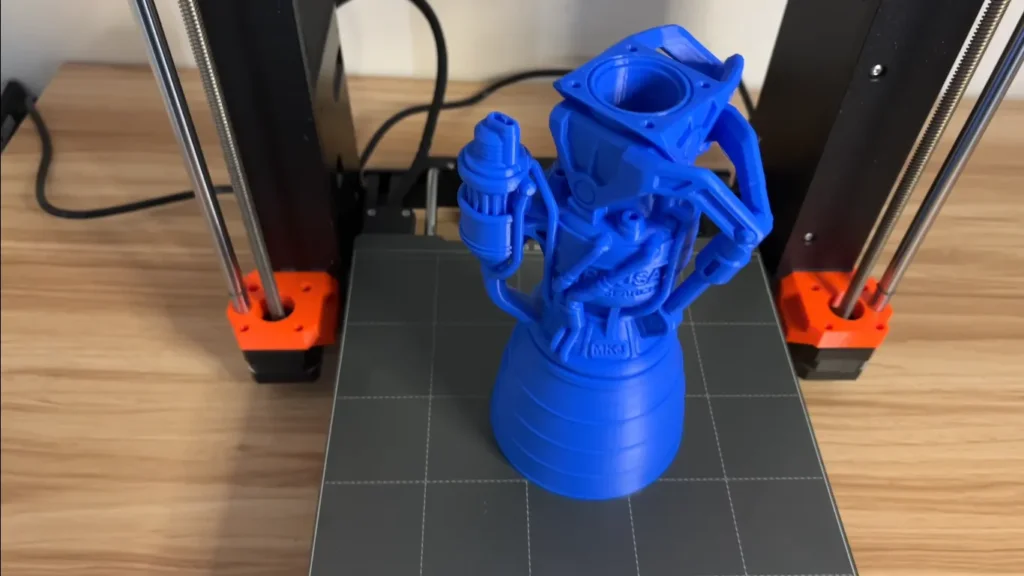
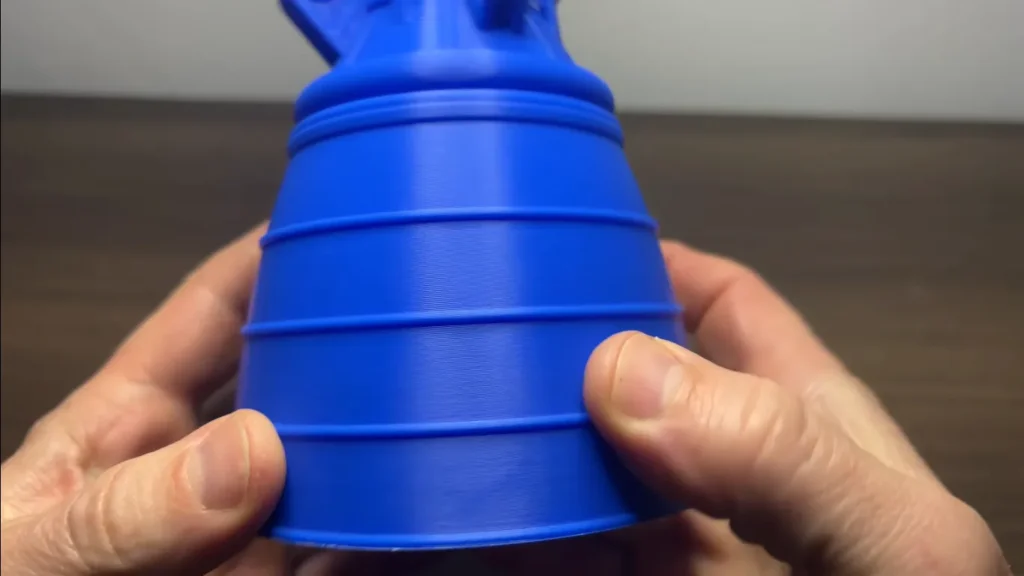
With the Nextruder’s modular design, maintenance is a breeze. Swapping out the nozzle or other worn parts takes just a few minutes, not hours.
A small inconvenience is that belt tensioners aren’t as readily available. While this isn’t a major problem, it’s something to keep in mind if you’re used to printers with tool-free tensioning systems.
Price and Value Proposition
Let’s talk about the cost. The Prusa MK4 isn’t inexpensive, with a price tag of about $1,100 for the assembled model (plus shipping and possible import fees). It’s competing with printers like the Bamboo Lab X1 Carbon, which offers some advanced features at a similar price point.
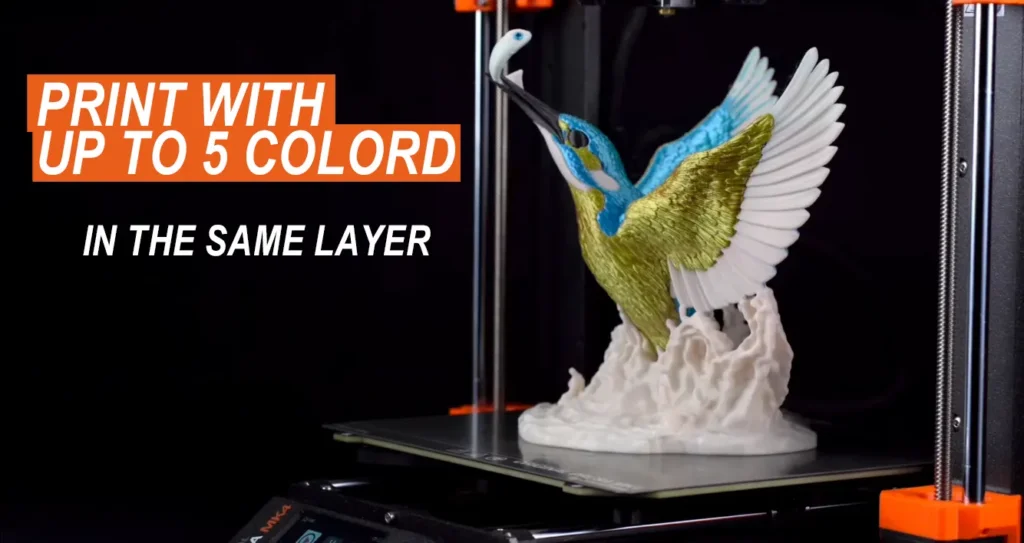
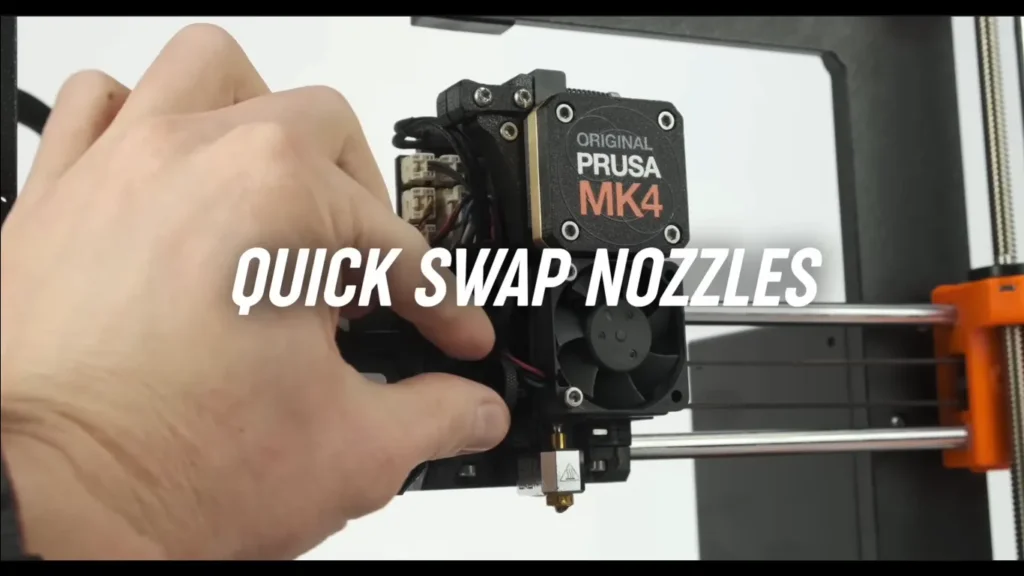
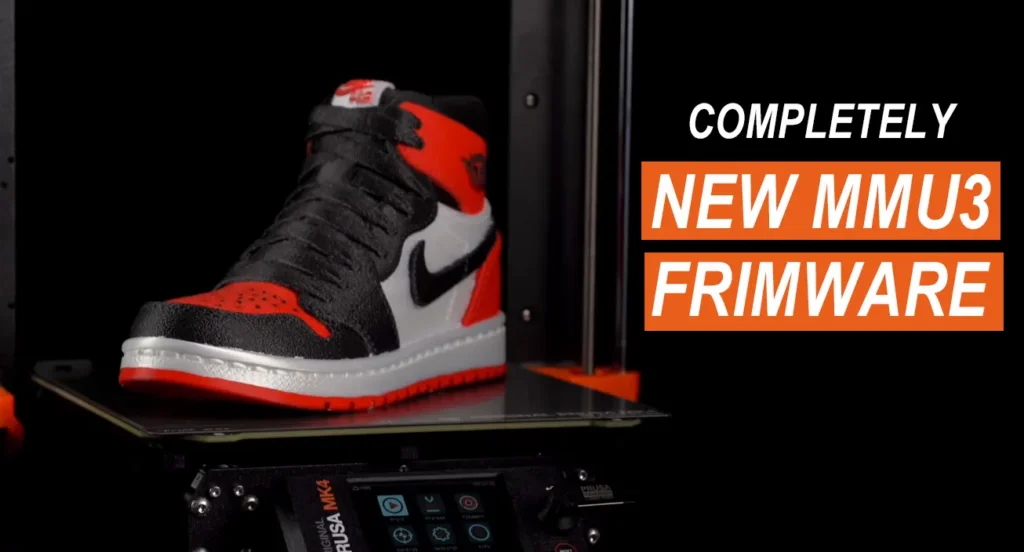
However, I think the Prusa MK4 is worth what you pay for it, because they deliver on reliability and print quality, not to mention Prusa’s steadfastly excellent customer service. A printer that will be with you from beginner to expert, without you having to constantly fiddle or upgrade.
Upgradability and Add-ons
Prusa has always been good about providing upgrade paths for their printers, and the MK4 is no exception. The optional MMU3 (Multi-Material Upgrade) allows for printing with up to five colors or materials simultaneously. While I didn’t test this myself, reports from the community suggest it’s a significant improvement over previous versions.
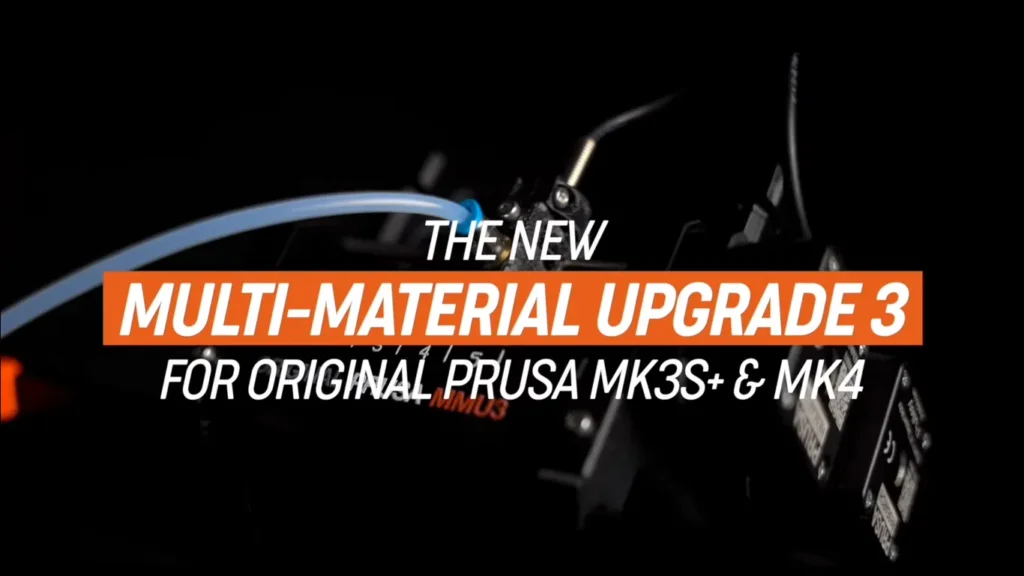
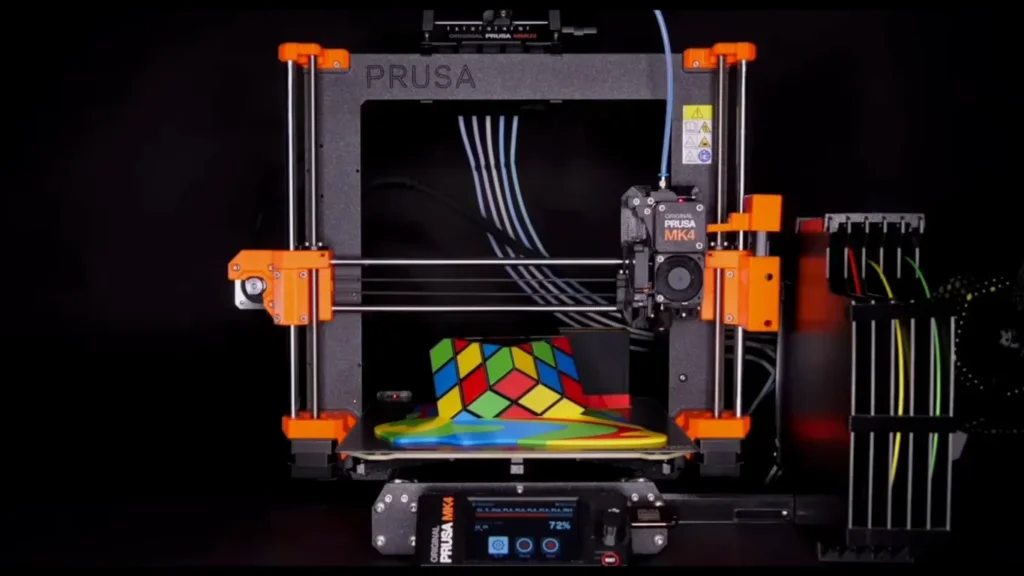
For those looking to print with more advanced materials, Prusa offers an enclosure kit. It’s a bit pricey but well-designed and integrates seamlessly with the printer.
Final Thoughts
After months of use, I can confidently say that the Prusa MK4 is a worthy successor to the legendary MK3S+. It’s not perfect – no printer is – but it strikes an excellent balance between ease of use, print quality, and reliability.
For beginners, the Prusa MK4 offers a simple and enjoyable introduction to 3D printing. Experienced users will appreciate its dependable performance, capable of handling various materials and print speeds with ease.
A worthy investment, especially if you are a true 3D printing enthusiast and looking for a machine that will last the years. The Prusa MK4 is a solid option for this. It is much more than a printer, it is the tool that make you unleash your creativity and bring to life what lives only in your mind.
Whether you’re creating practical parts, intricate miniatures, or anything else, the Prusa MK4 consistently produces excellent results. It’s a printer that will rekindle your passion for 3D printing.
The Prusa MK4 still shines as a symbol of durability and excellence in the changing 3D printing world. It’s not the fastest or the cheapest, but it could be a very reasonable option for most users in 2024. Happy printing, folks!
FAQs
Is the Prusa MK4 suitable for beginners?
Absolutely! Though an exceedingly good choice for those serious about getting into 3D printing who may not have much cash to put down. The automatic bed leveling combined with pre-configured slicer profiles make it easier to get started.
How does the print speed compare to other printers in its class?
In return, the Prusa MK4 provides a somewhat faster print time than its predecessor, not quite enough to win any speed records but competitive with other printers in its class. It provides a good combination of speed and quality, doing better than most similarly priced competitors yet producing exceptional prints.
Can the Prusa MK4 print with flexible filaments?
Yes, the new Nextruder handles flexible filaments like TPU quite well. It’s a significant improvement over the MK3S+ in this regard.
Is an enclosure necessary for the Prusa MK4?
For most materials like PLA and PETG, an enclosure isn’t necessary. However, If you’re printing with ABS or other high-temperature materials, an enclosure is ideal for optimal results.
How loud is the Prusa MK4 during operation?
he Prusa MK4 is typically quiet, particularly when printing at moderate speeds. At higher speeds it is louder, but less loud than many available printers.
Can I upgrade my MK3S+ to an MK4?
While Prusa hasn’t revealed an official upgrade path for the MK3S+ to the Mk4. Given their track record, it is possible that they could release one at a later date but buyers will need to purchase a new printer for now.
How does the Wi-Fi connectivity work?
You can connect the Prusa MK4 to your home network thanks largely to its built-in WiFi. It gives you the ability to remotely monitor and control your printer using Prusa Connect. At present, moving files over Wi-Fi is slower than using a USB dongle.
Is the Prusa MK4 worth the price compared to cheaper alternatives?
For many users, yes. In all honesty, the Prusa MK4 is pricier than many others out there, yet it guarantees an investment in print quality and peace of mind with reliability as well as great support. For those who prefer stability and ease-of-use, this is especially well worth it.
How often does the Prusa MK4 receive firmware updates?
Prusa is known for providing regular firmware updates. Since its release, the Prusa MK4 has received several significant updates, including the addition of Input Shaping and Pressure Advance. You can expect continued support and improvements over time.
Can the Prusa MK4 use third-party filaments?
Yes, the Prusa MK4 is not locked to any specific brand of filament. While Prusa offers their own high-quality Prusament, you’re free to use any 1.75mm filament that’s compatible with the printer’s capabilities.
Nikko Jenkins is a technology journalist based in the US, covering tool reviews and comparisons across North America, Europe and Asia, particularly 3D Printers. His concise, insightful articles on the latest innovations help readers worldwide make informed tech decisions. Jenkins’ expertise and engaging style have made him a respected voice in the global technology landscape.
Feel free to reach out to me at nikkojenkins@360techinsights.com.



